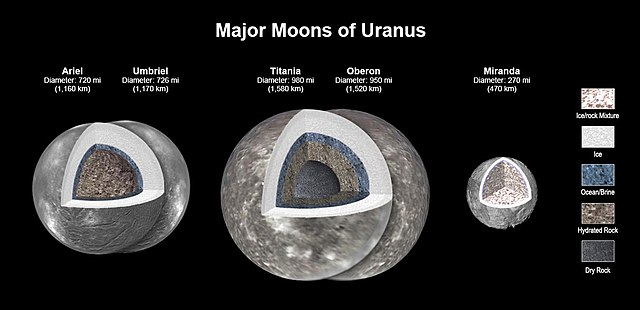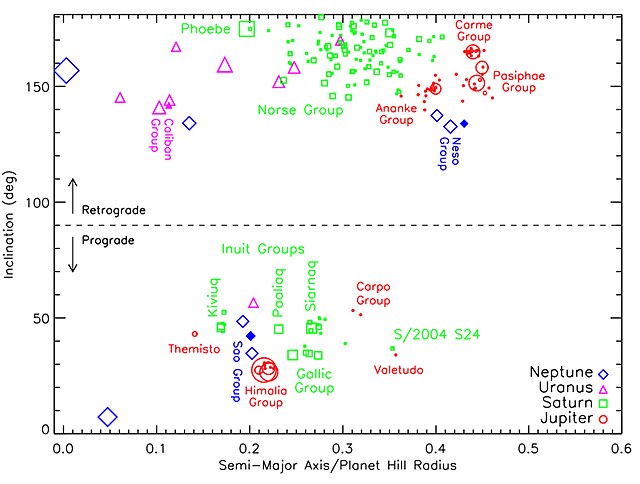Umbriel is the third-largest moon of Uranus. It was discovered on October 24, 1851, by William Lassell. It was discovered at the same time as Ariel and named after a character in Alexander Pope's 1712 poem The Rape of the Lock. Umbriel consists mainly of ice with a substantial fraction of rock, and may be differentiated into a rocky core and an icy mantle. The surface is the darkest among Uranian moons, and appears to have been shaped primarily by impacts. However, the presence of canyons suggests early endogenic processes, and the moon may have undergone an early endogenically driven resurfacing event that obliterated its older surface.
Grayscale image of Umbriel from Voyager 2, January 1986. Umbriel's surface is heavily battered; the bright crater Wunda can be seen at the top of the image.
False color image of Umbriel showing polygons
The Voyager 2 spacecraft
Uranus, the seventh planet of the Solar System, has 28 confirmed moons. Most of them are named after characters that appear in, or are mentioned in, the works of William Shakespeare and Alexander Pope. Uranus's moons are divided into three groups: thirteen inner moons, five major moons, and ten irregular moons. The inner and major moons all have prograde orbits and are cumulatively classified as regular moons. In contrast, the orbits of the irregular moons are distant, highly inclined, and mostly retrograde.
Uranus and its six largest moons compared at their proper relative sizes and in the correct order. From left to right: Puck, Miranda, Ariel, Umbriel, Titania, and Oberon
Moons (Ariel, Umbriel, Titania, Oberon, Miranda) Modeling (4 May 2023)
Irregular satellites of Jupiter (red), Saturn (green), Uranus (magenta) and Neptune (blue; including Triton), plotted by distance from their planet (semi-major axis) in the horizontal axis and orbital inclination in the vertical axis. The semi-major axis values are expressed as a fraction of the planet's Hill sphere's radius, while the inclination is expressed in degrees from the ecliptic. The radius of the Uranian Hill sphere is approximately 73 million km.






